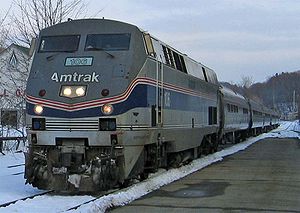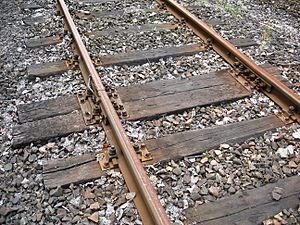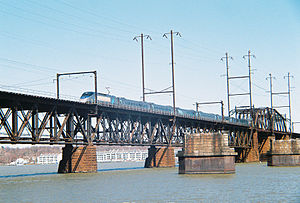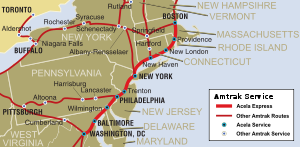There can be no doubt that James McCommons is a man who loves trains. While he may not be a foamer(the term for a railfan who could be called excessively enthusiastic), McCommons spent a year riding intercity passenger trains around the country and meeting with every important player in the passenger rail industry.
That intercity passenger rail exists at all in this country, McCommons tells us, is nothing short of the miraculous result of a series of compromises, of a political machine bent on killing it, and of small groups at the margins fighting to preserve what remnants they could. Amtrak was founded on the premise that passenger rail, including infrastructure costs, could be profitable, when no such demand was ever made on road or air travel, the infrastructure of which is heavily subsidized. Without specific funds earmarked for Amtrak, every year became a funding battle, and another opportunity for opponents to kill it.
McCommons’ narrative has the feel of a journey by train; the details of different lines and the passengers who he meets gently blend together like scenery quickly passing by a train’s window. McCommons captures the serenity of train travel, the ability to contemplate, to meet interesting people. In a world where air travel has become steadily more unpleasant, and surging fuel costs and environmental concerns have led some to diminish their automobile use, intercity train travel could be an increasingly viable alternative, if only routes existed, were run at sufficient frequency, and with reasonable on-time performance.
Unfortunately, there is little incentive for the freight rails which own the track to upgrade their infrastructure to allow greater speed and throughput. Until recently, there has been little federal money available for infrastructure upgrades. Where individual states have allocated funds there are pockets of better service, but they are rare, and there has been no clear national strategy.
When given a competitive rail option, it is clear that many Americans will choose it. McCommons reminds us how much we all love trains, and paints a tragic picture of the lost opportunity that our deteriorated passenger rail system represents. Waiting on a Train: The Embattled Future of Passenger Rail Service–A Year Spent Riding across America presents a case that is subtle and understated, but ultimately convincing. It should be required reading for all legislators who might be convinced that a strong intercity passenger rail network serves a vital national interest and is crucial to continued American prosperity. For the rest of us, it’s a pleasant diversion; a fine approximation of the experience of riding every Amtrak line, and awakens in us a longing to ride the rails.
Related articles by Zemanta
- Fed-up fliers turn to U.S. train travel (msnbc.msn.com)
- Faster Trains Lead Amtrak’s List of Needs (nytimes.com)





